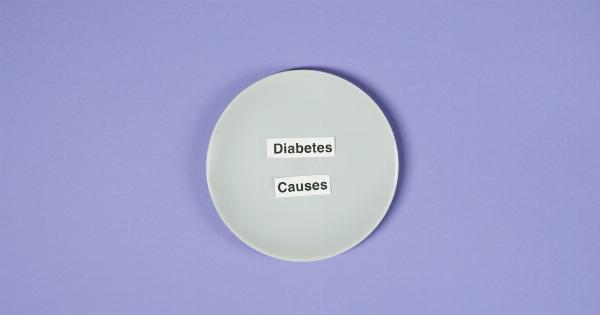Thrombosis is a medical condition caused by the formation of blood clots in the body. It can occur in both the arterial and the venous systems of the body and can lead to serious health complications if ignored or left untreated.
Ignoring thrombosis can be a dangerous decision, as it can lead to embolism, stroke, heart attack, and even death. In this article, we will explore the causes, symptoms, and treatment of thrombosis to help raise awareness of this potentially life-threatening condition.
Causes of Thrombosis
There are several factors that can increase the risk of developing thrombosis. Some of the most common causes of thrombosis include:.
- Immobility: Sitting or standing for long periods of time can cause blood to pool in the legs and increase the risk of blood clots.
- Surgery: Major surgeries, especially those that require long periods of time under anesthesia, can increase the risk of thrombosis.
- History of thrombosis: People who have had a previous blood clot are at an increased risk of developing thrombosis again.
- Cancer: Certain types of cancer and cancer treatments can increase the risk of thrombosis.
- Pregnancy and childbirth: The increased pressure on the veins in the pelvis during pregnancy and delivery can increase the risk of thrombosis.
- Hormone therapy and birth control: Some forms of hormone therapy and birth control can increase the risk of thrombosis.
- Smoking: Smoking can damage the lining of blood vessels and increase the risk of thrombosis.
Symptoms of Thrombosis
The symptoms of thrombosis can vary depending on where the blood clot is located in the body. Some common symptoms of thrombosis include:.
- Pain or tenderness in the affected area
- Skin that feels warm to the touch
- Swelling in the affected area
- Redness or discoloration of the skin
- Shortness of breath
- Chest pain or discomfort
- Coughing up blood
- Weakness or numbness on one side of the body
It is important to seek medical attention if you experience any of these symptoms, as thrombosis can lead to serious health complications if left untreated.
Treatment of Thrombosis
The treatment of thrombosis depends on the location and severity of the blood clot. Some common treatments for thrombosis include:.
- Anticoagulant medication: These medications thin the blood and prevent new blood clots from forming.
- Thrombolytic therapy: This treatment dissolves blood clots and is typically used for more severe cases of thrombosis.
- Vena cava filter: This device is inserted into the inferior vena cava to prevent blood clots from traveling to the lungs.
- Compression stockings: These stockings apply pressure to the legs to prevent blood from pooling and reduce the risk of blood clots.
- Lifestyle changes: Making lifestyle changes, such as quitting smoking, losing weight, and increasing physical activity, can help reduce the risk of thrombosis.
Preventing Thrombosis
There are several steps you can take to help prevent thrombosis, including:.
- Stay mobile: Move and stretch your legs frequently if you must sit or stand for long periods of time.
- Stay hydrated: Drink plenty of water to help prevent dehydration, which can increase the risk of thrombosis.
- Quit smoking: Smoking damages the lining of blood vessels and increases the risk of thrombosis.
- Maintain a healthy weight: Excess weight can put pressure on veins and increase the risk of thrombosis.
- Exercise regularly: Regular exercise can help improve circulation and reduce the risk of thrombosis.
- Avoid sitting for long periods of time: If you must sit for long periods of time, take frequent breaks to stand up and move around.
- Discuss hormone therapy and birth control options with your doctor: Certain forms of hormone therapy and birth control can increase the risk of thrombosis.
The Danger of Ignoring Thrombosis
Ignoring thrombosis can be a dangerous decision, as it can lead to serious health complications if left untreated. Thrombosis can cause embolism, stroke, heart attack, and even death.
It is important to seek medical attention if you experience any symptoms of thrombosis, as early diagnosis and treatment can help prevent these complications.
By taking steps to prevent thrombosis and seeking medical attention if you experience any symptoms, you can help protect your health and reduce the risk of serious health complications.






























